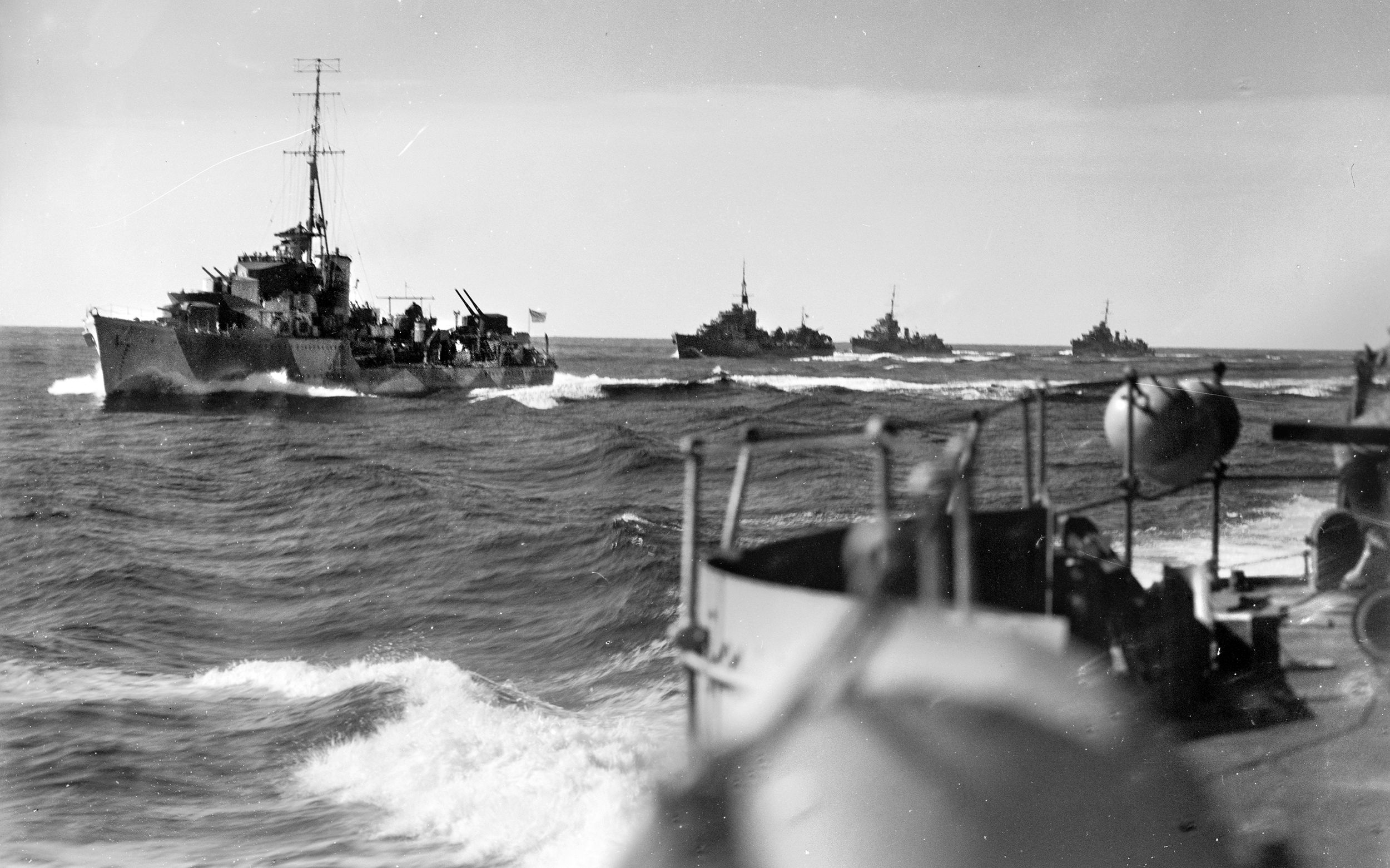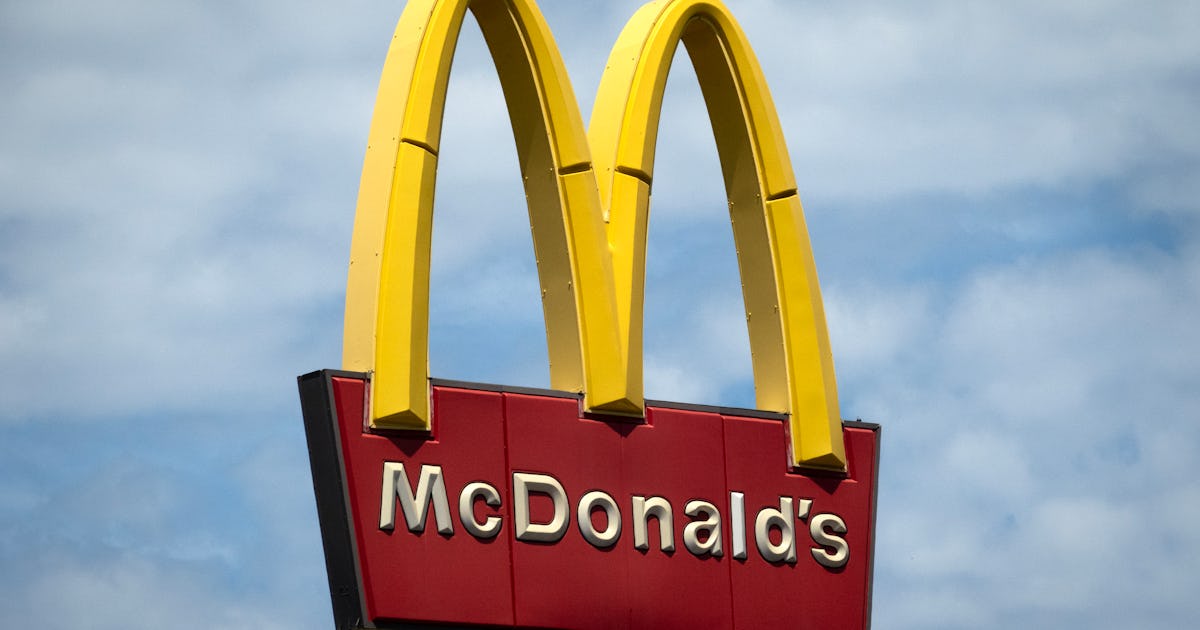Italian Convoy Intercepted - Warfare History Network
By April 1941, Great Britain had been at war for 19 months. Although nurtured and nourished by her empire, she took all the body blows from an increasingly vicious enemy. The Soviet Union, lulled by alliance, had not yet absorbed and repulsed the Nazi tide in full. The United States slept fitfully, seemingly secure behind her ocean moats until the day of cruel awakening.
Things looked bleak for Britain. In February of 1941, General Erwin Rommel had landed in Libya with his newly minted Afrika Korps. He did so because Britain had pushed the Italians out of Egypt, which Mussolini had foolishly invaded, and the Britons now threatened to evict the outclassed Italians from the entire continent of Africa.
Rommel took the offensive, and by April 11 had reversed the British advance and driven them all the way to Tobruk. Elsewhere in April, a pro-German coup took place in Iraq, which threatened the entire Middle East and the all-important Allied link to India. The Germans also invaded Greece and Yugoslavia—again coming to Mussolini’s assistance—while the Luftwaffe continued bombing London, damaging St. Paul’s Cathedral that month.
The only bright spots for Britain were the victory in the naval Battle of Cape Matapan in late March and the fall of Addis Ababa on April 6, in faraway Ethiopia. The British public desperately needed some good news. Fortunately, the Royal Navy was about to capitalize on its victory off the Matapan peninsula in the southern Peloponnese.
The entire Mediterranean Sea was a combat zone. Before the war, Britain and France dominated the sea with the two largest fleets in Europe. Only Italy and her colony in Libya were controlled by the Axis. But after the French capitulated, only Egypt, Palestine, and two specks on the sea, Malta and Gibraltar (and briefly Greece), welcomed the Union Jack.
The center of the fighting in the Mediterranean theater, and the key to victory in the region, was Malta. In British hands, Malta interrupted commerce between Italy and Libya. In Italian or German hands, it would close the entire Mediterranean Sea to the Royal Navy. The two Axis powers continually bombed the island and sank the ships that tried to supply it. All the while, the Royal Navy and Air Force used Malta to strike at Italian convoys heading to Libya. From early 1940 to late 1944, the Mediterranean Sea remained a critical battleground.
As successful as Rommel was in Africa, he needed men, fuel, and ammunition to recoup his losses and keep his tanks rolling and planes flying. Relief could only come from the ports of Italy. On the evening of April 13, 1941, the 20th convoy of ships carrying troops and equipment for Rommel’s Afrika Korps embarked from Naples bound for Tripoli in Libya. Previous convoys had sustained few losses from British attacks.
This convoy consisted of four German transport ships: Adana (4,200 tons displacement), carrying 339 German troops; Iserlohn (3,700 tons), 282 troops; Aegina (2,400), 217 troops; and Arta (2,400), 194 troops. Between them they also carried 392 vehicles and 1,510 tons of supplies.
An Italian freighter, Sabaudia, carried 1,371 tons of German munitions. These ships could not make more than 8-11 knots. In comparison, the soon-to-be-built American Liberty ships would displace 14,000 tons, though their speed wouldn’t be much better.

The slow transports were escorted by three Italian destroyers, which could make 32 knots. The lead ship was the Navigatori-class R.N. Luca Tarigo, of 1,900 tons (the British would name the coming battle after her). The other two were older Folgore-class destroyers, R.N. Lampo and R.N. Baleno, at 1,220 tons. All three were armed with 120mm main guns, 40mm antiaircraft guns, torpedo tubes, depth charges, and mines. The convoy sailed under the command of 40-year-old Commander Pietro de Cristofaro aboard Luca Tarigo. He had served in the Regia Marina since he was 14, rising steadily through the ranks.
Unfortunately, his convoy’s departure from Naples was no secret. The British intercepted and deciphered radio messages revealing the convoy’s departure from Italian shores and its destination. These coded Italian messages were easily read because of the code-breaking expertise of British Intelligence. In this case, it was the work of an agency outside the famed Bletchley Park.
Fresh from victory at Matapan, a squadron of four British destroyers had just arrived at Malta on April 10 with orders to attack Italian shipping. Learning of the convoy en route to Libya and knowing its location, they weighed anchor and set out in pursuit of the enemy ships about 160 miles to the west.
The British destroyers were flagship HMS Jervis, HMS Janus, HMS Nubian, and HMS Mohawk of the 14th Destroyer Flotilla under the command of Capt. Philip Mack. The son of a cavalry officer, Mack, like De Cristofaro, had joined the navy at a young age (13). He, too, rose through the ranks and was awarded the Distinguished Service Order (DSO) on July 11, 1940, for a previous action. He would win a bar (the symbol for a second DSO) in the coming fight.
Captain Mack led the flotilla aboard Jervis, which was a J-Class destroyer of 1,690 tons. Like her Italian counterparts, she was armed with 120mm guns, 40mm antiaircraft guns, torpedo tubes, and depth charges. Because Jervis was the flagship, she was probably also equipped with radar. Janus was also a J-class destroyer, of similar displacement and armament. Later, while supporting the landings at Anzio, Janus would be sunk by a German guided glide bomb. Nubian was a larger, Tribal-Class ship at 1,891 tons, sporting 120mm guns, “pom-pom” antiaircraft guns, torpedo tubes, and depth charges. She had been fitted with the Type 285 gunnery radar. Mohawk was another Tribal-Class ship. Although three of the four British destroyers had radar, no Italian ship did at the time. There was also a significant disparity in weaponry—the four British destroyers mounted 28 of the 120mm guns, while the three Italian destroyers had only 14 in total.
Having left Naples, the Axis convoy was scattered by foul weather on its first night out and fell four hours behind schedule. At about 1300 hours an American-made Martin Model 167, which the British called a “Maryland,” of No. 69 Squadron RAF, spotted the Axis ships and tailed them while sending a message to Malta. The message was intercepted by Supermarina, the Italian Navy Headquarters, which immediately requested assistance from the Italian Air Force (Superaereo). Two Savoia-Marchetti SM-79 torpedo bombers were dispatched to provide air cover for the convoy.
The SM-79s had a good record early in the war, sinking two merchant ships, heavily damaging the light cruiser HMS Manchester, and sinking the F-class destroyer HMS Fearless. On this mission, though, only one SM-79 was able to take off in the heavily gusting winds, and it was soon forced to return to base. The convoy was then told to alter course to throw off any pursuers. In all likelihood, Captain De Cristofaro did not know he was being followed.
Having cleared port in Malta, the four British ships made 26 knots in line astern to reach a point about 20 miles in front of the convoy and block its path. The speed of the target convoy was only eight knots. When the British arrived at the intercept point, the convoy was nowhere to be found. Captain Mack pondered his next move.
After tracking back to the north, he reversed course to the south and hugged the Tunisian coast, searching for his prey. At 0158 hours the convoy was sighted at a distance of six miles. The Italians were located close to shore, passing the low-lying Kerkennah Islands near Tunisian city of Sfax (the battle is sometimes called “the Action off Sfax”).
Mack maneuvered quickly but silently to a position astern of the convoy, where the moon backlit his target; he could see the Italians, but they could not see him. The British remained unseen until they were within 2,000 yards. Then Mack ordered, “Train tubes to port!” as torpedo men and gunners brought their weapons to bear on the nearest targets.
At 0220 hours, Jervis, Janus, and Mohawk opened fire with their main guns, the 40mm pom poms, and light machine guns—essentially everything they had. Only then did the sailors aboard the slow convoy ships become aware that they were in mortal danger. Immediately, Baleno was hit on the bridge, killing her commander and most of her officers. Caught by surprise, Baleno returned fire but was hit again in the engine room and was soon a burning wreck, sinking shortly afterward.

Lampo was simultaneously attacked. Her captain ordered full speed ahead, and her gunners began firing back into the deadly darkness but only managed three salvos before Jervis destroyed both of her twin 120mm mounts. Lampo then fired torpedoes at the attackers but again missed. She began to sink but ran aground on a shoal. The Italians would later salvage Lampo, and a year later put her back in service—only to have her sunk in 1943.
At 0250, the ammunition ship Sabaudia was hit by Mohawk and erupted like a volcano, lighting the night sky with flames said to have reached an altitude of 2,000 feet. At about the same time Tarigo, which was leading the convoy, spun hard to starboard to place herself between the British and the merchant ships. But she came under the guns of Jervis and Janus, which hammered her with rapid fire. The first hit on Tarigo seriously wounded de Cristofaro, who lost a leg. He had the presence of mind to use his belt as a tourniquet and continued in command, but he was mortally wounded. The captain lay dying on the bridge of his shattered ship as the situation became desperate.
In the heat of battle, Mohawk came into view of the sinking Tarigo, illuminated by the roaring fires on Sabaudia. She was observed by Lt. Ettore Bisagno, a junior officer. Heedless of the danger, Bisagno and his torpedo crew trained the launcher on the enemy and fired three torpedoes in sequence.
Two Italian torpedoes hit Mohawk and sank her. Crewman Frederick Baker remembered, “Mohawk was hit by a torpedo which immobilized us causing considerable damage in the engine room and causing us to stop. We then became a sitting target, and in a few moments we were hit again. This time we started to sink rapidly, so we had to abandon ship.”
Six rafts were launched, and other men flung themselves into the sea. Mohawk rolled on her side, her forecastle bobbing in the water until after the battle, when she was sunk by gunfire from Janus. Forty-three of her crew were killed. The sinking of Mohawk made Tarigo a special target for British revenge, and she was pounded into wreckage before going down at 0320.
Then it was the turn of the four German steamers, no match for the British “greyhounds of the sea,” which were sunk in quick succession. In the darkness, however, the British did not notice that Arta had settled in the shallows and that much of her superstructure and hull remained above water until the high tide slid her into deeper water, where she sank.
Dawn was approaching, and Mack did not want to become the target of Luftwaffe planes that would soon be prowling the skies. Survivors from Mohawk were pulled from the water, but there was no time to rescue enemy survivors for future interrogation.
The Battle of the Tarigo Convoy was a one-sided affair. The Italians and Germans lost three destroyers, the ammunition ship, and the four steamers, eight ships in all. The numbers of killed and wounded, both Italian and German, is estimated at about 700. The British lost only one destroyer and 43 men. It was the kind of good news that Britain needed. Rommel had lost an entire convoy of weapons, ammunition, fuel, guns, and vehicles—not to mention men. The survivors made it to Libya, but they brought nothing to fight with.
After the battle, Italian divers searched through Mohawk and claimed to have found some signal books and, more importantly, maps of the minefields at Alexandria, which served them in a later raid on that port.
The overwhelming British victory marked the end of the easy passage of Axis transports to Libya, which they had enjoyed since June 1940. Malta had withstood—and would continue to withstand—enemy bombing and the sinking of Allied ships on their way to sustain the island. It remained an important, unsinkable Allied bastion in the strategic Mediterranean.
Glenn Barnett is a retired college instructor and aerospace engineer. He worked on the Apache helicopter, B-1B bomber, and Space Shuttle. He is a frequent contributor to WWII History.










:max_bytes(150000):strip_icc()/Parents-SupermanMovieTrailer-b216b7f3a5a0442f9aec56736b5a3d7b.jpg)
